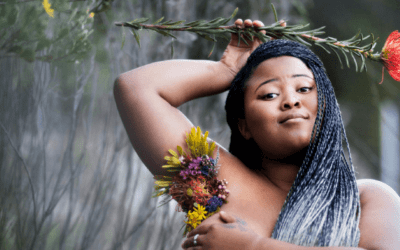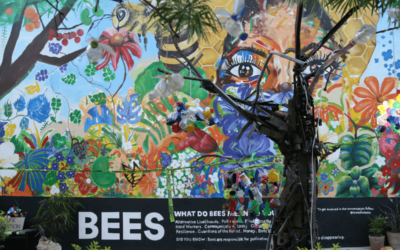Sustainable Textiles:
Finding Your Forever Fabrics
26
JUNE, 2023
By Lizzy Erwee
Walking the slow race to sustainable fashion is a collection of cool, funky and sustainably sexy textiles. From hemp and linen to seaweed and fruit, scientists interested in unconventional fashion are becoming increasingly inventive in their efforts to save the environment.
One of the biggest, and easiest ways to notice the mark of a clothing item’s sustainability, is that of fabric choice. Handmade, fair trade, recycled, artisanal, eco-friendly and organic. Our clothes sit nestled on our skin every minute of every day and should be chosen for more than temperature or aesthetics. Textiles aren’t just pretty patterns, pleats or materials, they bring creation to creativity, while simultaneously bringing ruins to nature. Sustainable fabrics can be complex and confusing, hard to understand and even more difficult to navigate.
However, it shouldn’t deter us from experimenting. International brands like Ganni, Pangaia and Jungley are crafting products from banana waste, algae and lotus flowers. Some like Ganni have adopted the mindset of:
“ It might not work out, but that’s not a problem [… ] The situation is so dire, we need to leapfrog our way into this”. – Ganni’s Chief Executive, Nicolaj Reffstrup
Regionally, South African brands are also progressively diving into the alternative and the un-experimented. Though our access to resources may be plenty, our infrastructure and ability to fund test runs and trials with new textiles aren’t as hopeful. Regardless, we have seen the emergence of brands like Mungo, Hemporium and Funduzi whose products are being crafted from plastic bottles, organic cotton, hemp, soy, bamboo and corn.
There’s an endless list of alternate and sustainable fabrics available at our disposal, that have barely been researched, tested and tried. Some may work, others may not, but it’s all about adapting and driving change.

Fabrics of the Future
Contrary to popular belief, eco-friendly sustainable fabrics don’t just come in shades of beige and other earthy tones. They aren’t only spotted in a farmer’s market being stylishly donned by hipsters or in local coastal town boutiques. They come from our plants, crops, animals, from offcuts of clothes and our grandparent’s cupboards. There are endless amounts of sustainable fabrics available to the public that have been carefully curated to ensure your clothes remain cute but conscious. To limit your search, here are some old, new and wildly obscure textiles of this time.
The Plain Janes
Organic Cotton
A familiar face and old friend, organic cotton. A sustainable fabric treated without pesticides and grown from unmodified seeds. It’s a material good for the environment, the wearers and its makers. Chemical-free agricultural processes used for organic cotton ensure that the land remains healthy and fertile, workers in the area aren’t exposed to harmful substances and neither are the wearers. From its renewable properties to its superior softness, there’s nothing not to love about organic cotton.
Hemp
From the stem of the Cannabis Sativa plant, hemp uses limited water and zero chemicals, leaving the land luscious and regenerative. Though a labour-intensive process, hemp has multiple benefits and sustainable perks for the environment. From conserving large masses of carbon dioxide to being able to utilize the entirety of the plant for various purposes, hemp is a zero-waste winner.
Linen
Made from the ancient flax plant, linen is what I guess you could call, timeless chic, elegant and admirable. Linen’s resilience allows it to grow in tough conditions, using significantly less water than other fabrics like cotton. With roots deep in history, it’s one sustainable fabric that can teach us a lot.
Cork
We all scream BIRKENSTOCKS. A material that uses skilful practices and artisanal trades, passed down over generations. The harvesting of cork entails gently stripping the bark of cork trees as opposed to cutting them down. High amounts of carbon dioxide are absorbed by these layered trees during the regrowth period of bark, and once absorbed it is locked in and stored. Simply, it’s a natural carer of the atmosphere.

Goodbye P(lastic)leather
Fruit Leather
Odd and unusual to say the least. No one would ever think, fruit = fashion. It just doesn’t match. Yet here we are, making leather out of fruits. Those tropical snacks with hardy skins and sweet insides are making for some great alternatives to leather and pleather. Here comes this season’s flavours – mango, pineapple, banana and apple.
With major food waste, especially in the fruit industry, fruit fashion actually makes so much sense. Limiting the amount of waste that is discarded by fruit companies, using excess skins, peels and even the fruit itself.
Cactus Leather
A fast-growing warrior, the prickly pear. A pro-water-conserver and resilient cactus has many sustainable attributes. Cutting the leaves off so the plant can still grow while giving us waterproof, durable and abrasion-resistant fashion goods is a rather gorgeous and growing fashion trend.
Kombucha Leather
Definitely made by a crazy scientist, this faux leather is made from no other than kombucha, or if you don’t know what that is, a fermented brew of tea and some other bits and bobs. The process, a little sciency for my liking, is summed up as “a living culture that grows and evolves, consuming sugar as its fuel”. Instead of drinking the plastic that you wear, now you can wear what you drink!

Are These Even Real?
Soybean Textile
Believe it or not, this vegetable cashmere is real (and really soft), silky and luxurious, a boujier take on the vegan fashion scene. Soybean fabric uses the waste products of soybean hulls (a byproduct of soybean processing) and through a breakdown of protein and other hard-to-explain things, comes a spun sustainable fabric and beautiful winter warmer.
Rotten Milk
I’m not lying I promise! Also known as Qmilk, this bizarre invention originated in Germany and uses the protein casein found in milk to create a soft and silky fabric. This sustainable fabric only uses two litres of water per kilo of fabric during production. From spoilt to spun, rotten milk is an amazing way to reduce waste and create beautiful, biodegradable and recycled garments.
Seaweed Fabric
Disclaimer: if you lick it, it’s not salty or fishy. Chopped and mixed in with cellulose, the process of creating seaweed fabric is pretty simple. No chemicals, no excessive energy waste, just the seaweed turning yarn. With a gentle harvesting process and an even more delicate production process, seaweed fabric registers as an EU Ecolabel and is said to carry some health benefits for wearers. Rich in nutrients, seaweed fabric is said to hold and retain its properties throughout production and transfer its nutrient benefits when making contact with the skin.

Mushroom Fiber
A funky fabric made from fungi! One of the coolest, craziest and most creative things to come out of the ground. With many uses and benefits, this superfood is now keeping our stomachs fed, our brains expanding and our cupboards filled. Made from the spores and the roots of the fungus, the fibre possesses a strong, flexible and durable character.
Banana Fiber
A fruit that’s either loved or hated and shining bright with sustainable possibility! Another zero-waste plant-based textile(and one of my favourites), a hearty crop, that’s self-sufficient, untreated with pesticides and requires no additional water, bananas! It can be used as an alternative to silk and is made from both the inner and outer parts of a banana peel.
This novel fibre’s use extends far past that of clothes! Its multi-use, strong, durable and lightweight characteristics has enabled the production of sanitary pads, diapers, ropes, cables and paper. In all honesty, there’s probably very little you can’t do with a banana peel.
Whatever you wish to call them – fabrics, fibres, textiles or materials, they all play a vital part in the fashion industry and its impact on the environment. From water pollution in the form of dyes and plastics to excess garments in landfills, carbon emissions and large water usage. Selectively choosing and owning the fabrics you wear has the potential to make the world of difference, so make the right choice, choose the unconventional, the plants, the fruits, the spoilt milk, just choose sustainable.
These South African women have got bush.
These South African womxn have got bush. This Arbor Month, it's not only about trees... We've got bush. And so should you. At Greenpop, trees are at our roots, but after putting 80 000 trees in the ground over the last 7 years, we think it's time to branch out. In...
Can Art Play A Role For The Environment?
In a world that is ever-changing and that needs a great shift in people’s behaviour, what is the best way to communicate that need for change…
Top 10 Tips for Greening your Camping Trip
Leaving the city behind for the great outdoors and reconnecting with nature is always good for the soul, but it doesn’t necessarily mean it is always good for the environment…
Greenpop Foundation NPC is a registered non-profit organisation. Registration Number (NPO): 151-411 NPO.



